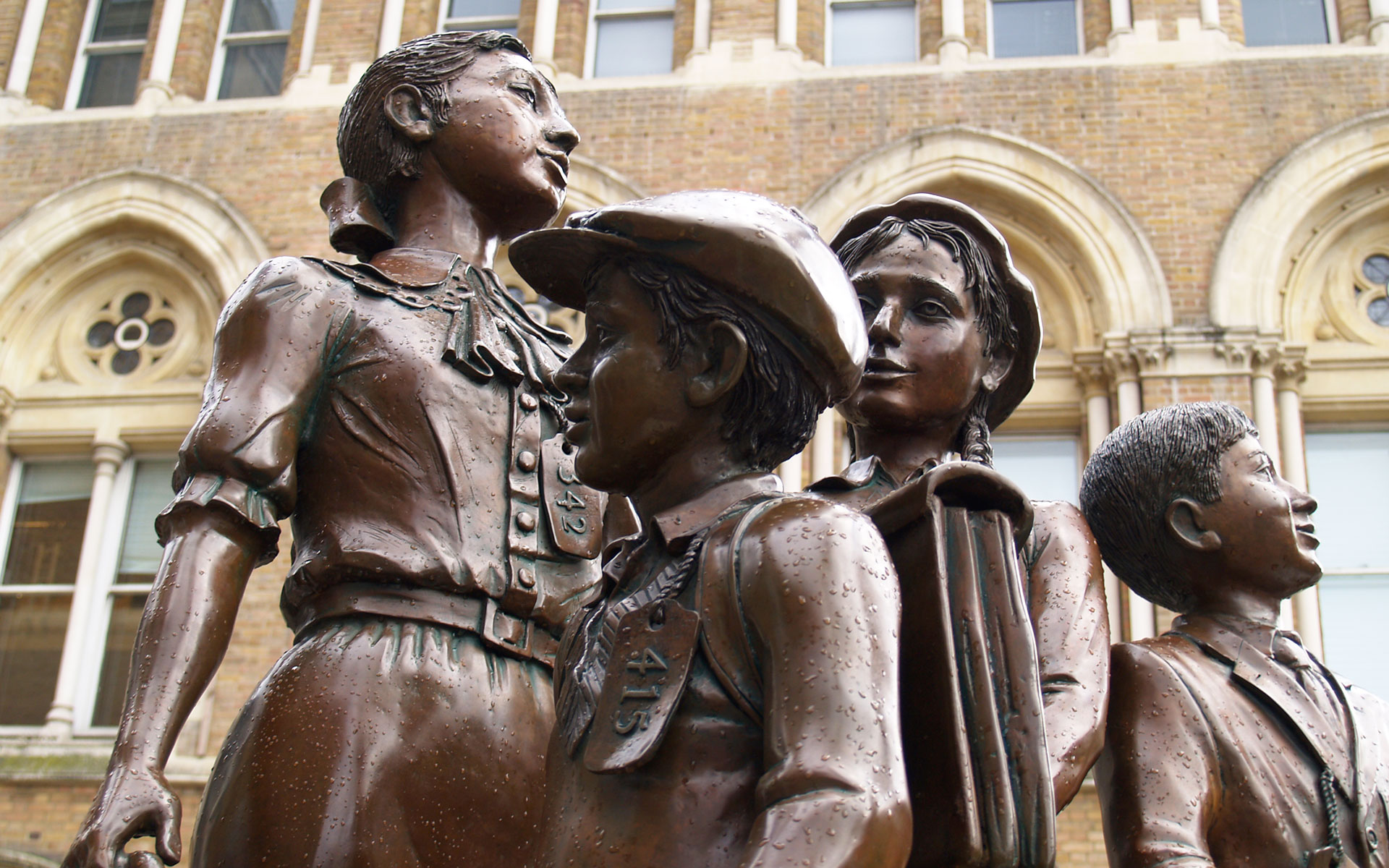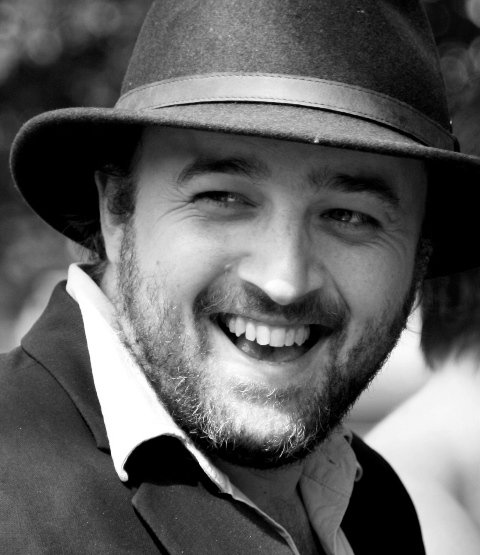Trains to Life
Frank Meisler's sculpture "Kindertransport - The Arrival" outside Liverpool Street station in London (photo © hidden europe).
Thousands of people pass by the children every day. Commuters, coming into Liverpool Street station for work in central London. Travellers from Stansted Airport, eagerly anticipating the days they will spend in London. Those off the boat which arrived at crack of dawn in Harwich, who have taken the train through the Essex countryside and into the capital.
The children, who themselves appear to be emerging into the city streets for the first time surrounded by their luggage, would have also come to London via boat and train. For they are representatives, cast in bronze, of the nearly 10,000 mostly Jewish children who made that same journey between December 1938 and August 1939 on what became known as the Kindertransport.
The Kindertransport, during which unaccompanied children from Nazi Germany, occupied Austria, Czechoslovakia, Poland and the Free City of Danzig were given entry into Britain without normal visa requirements, was organised by the British Jewish community, the government and the Refugee Children’s Movement. It began as a response to the pogrom against the Jews in Nazi Germany on 9 and 10 September 1938 and ended with the outbreak of World War II almost a year later. One of the children who came to Britain was Frank Meisler, a boy of thirteen who would grow up to become a sculptor, and the man responsible for the memorial of the Kindertransport children in front of Liverpool Street station.
Frank Meisler’s Kindertransport sculptures
Frank Meisler was born into a Jewish German-Polish family in the Free City of Danzig, today Gdańsk in Poland, and was evacuated with fourteen other children in August 1939 on one of the final transports to pass through Nazi German territory. From Danzig they travelled to Berlin and then on to Hoek van Holland in the Netherlands, before taking the boat to Harwich. His parents remained in Danzig where, only a few days after his evacuation, they were arrested and transported to the Warsaw Ghetto. They would both later perish at Auschwitz. In Britain, Meisler was brought up by his grandmother in London, studied architecture in Manchester, and moved to Israel in 1960 where he lived and worked as an architect and sculptor until his death in March 2018.
The sculpture Kindertransport – The Arrival, was erected at Liverpool Street station in 2006. It was followed in 2008 by a second memorial titled Trains to Life – Trains to Death, which stands outside Friedrichstraße station in the centre of Berlin. The Berlin sculpture not only remembers the children who made it out via the same route as Frank Meisler, but also the 1.6 million Jewish and non-Jewish children who were murdered in the Holocaust. Standing between the brick station buildings and new office blocks erected since the fall of the Berlin Wall, it is a striking memorial in a city that is home to many sites of memory, both celebrating the Kindertransport while starkly reminding us of how many more were lost to the camps.
Meisler continued his series in 2009 with Kindertransport – The Departure, which stands in front of Gdańsk Główny station in the sculptor’s birthplace, and two further sculptures in Hoek van Holland (Kindertransport – Channel Crossing to Life, 2011) and Hamburg (Kindertransport – The Final Parting, 2015) that he created with his long-time collaborator Arie Ovadia. Together these five memorials symbolize way stations on the routes of many of the 10,000 children who made their way to Britain in the nine months following the arrival of the first group at Harwich, 200 children who came from a Jewish orphanage just outside Berlin and landed in England on 2 December 1938.
Memory endures
In 2018, on the 80th anniversary of that first transport and nine months after the death of Frank Meisler, a ceremony was held at Liverpool Street station next to the memorial which was attended by around thirty ‘Kinder’ and their families, as well as many others including Peter Wittig, Germany’s Ambassador to the United Kingdom. The anniversary, Wittig said, was a timely reminder of the need for vigilance and moral courage against what he described as “the backdrop of the continuing rise of antisemitism, racism and xenophobia across the world.”
His words reflected on the importance of such events in not only remembrance but also in how we apply lessons of the past to the future. But for the rail travellers at Liverpool Street and Friedrichstraße, Hamburg’s Dammtor and Gdańsk Główny, as well as those waiting to board the ferry at Hoek van Holland, Frank Meisler’s memorial sculptures serve as a permanent reminder. During the recent anniversary of the end of World War II in Europe, the German President Frank-Walter Steinmeier made the point succinctly: “Remembrance never ends. There can be no deliverance from our past. For without remembrance we lose our future.”
Five memorials, four countries and thousands of stories. Linked by railway lines from Gdańsk to Berlin, to Hamburg and Hoek van Holland. The boat to Harwich and on to London. Links that cross borders on land and sea. And links that remind us this is a shared past, one we must be determined to never forget.
Travel writer Tim Locke has an excellent blog that explores aspects of the Jewish background of his own family. A recent post on that blog describes how his mother travelled to England on the one of the Kindertransport trains.





About The Author
Paul Scraton
Paul Scraton was born in Lancashire and has lived in Berlin since 2001. A writer with a particular interest in landscape, memory and place, he is the editor-in-chief of Elsewhere: A Journal of Place. He is the author of a number of books including The Idea of a River: Walking out of Berlin (Readux, 2015) and Ghosts on the Shore: Travels along Germany's Baltic coast (Influx, 2017). His debut novel Built on Sand was published by Influx in 2019. Find out more about Paul on his website.